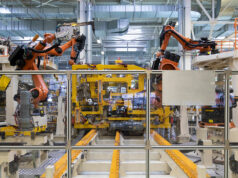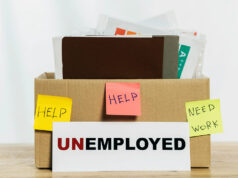I was born in the year of the First Quarter Storm. It was the same year that a 7.4 magnitude earthquake hit Luzon that killed 15 and injured 200, that Typhoon Sening left 575 dead in Camarines Sur, and that Typhoon Yoling ravaged Manila and killed 611. It was also that year that Pope Paul VI visited the Philippines and survived an assassination attempt.
That year, a constitutional convention was also called to revise and amend the 1935 Constitution, and a young constabulary officer led the New People’s Army in raiding the armory at the military academy. A Marcos was president, a Lopez was vice-president, a Laurel was House Speaker, and Roberto Concepcion was chief justice.
At the time, soft drinks, beer, and other beverages came in glass bottles. So did chocolate milk and pasteurized milk, which were sold in grocery stores. And people brought home groceries in boxes or brown paper bags. Processed food came either in a can or in waxed paper packaging, and “modern” supermarkets had only started using plastics for wrapping.
Over four decades after, the Philippines is now reportedly the third-largest contributor of plastic waste in oceans. And the culprit is mainly single-plastic products, according to the World Wildlife Fund. It noted on its website, “The low cost and convenience of plastic sachets, as well as inefficient waste disposal, has made the Philippines one of the world’s leading plastic polluters, with tremendous negative impacts on the environment.”
The UN Environment Programme (UNEP) also noted in its website, “our planet is drowning in plastic pollution,” and I believe that unless something drastic is done soon to better manage plastic production and plastic waste, mankind’s most important invention will also be its downfall. According to most accounts, the damage done in the last 50 years is severe.
“While plastic has many valuable uses, we have become addicted to single-use or disposable plastic — with severe environmental consequences. Around the world, one million plastic drinking bottles are purchased every minute, while up to five trillion single-use plastic bags are used worldwide every year. In total, half of all plastic produced is designed to be used only once — and then thrown away,” UNEP noted.
It added, “Researchers estimate that more than 8.3 billion tonnes of plastic has been produced since the early 1950s. About 60% of that plastic has ended up in either a landfill or the natural environment. We’re seeing some other worrying trends. Since the 1950s, the rate of plastic production has grown faster than that of any other material. We’ve also seen a shift away from the production of durable plastic, and towards plastics that are meant to be thrown away after a single use.”
It also said, “More than 99% of plastics are produced from chemicals derived from oil, natural gas and coal — all of which are dirty, non-renewable resources. If current trends continue, by 2050 the plastic industry could account for 20% of the world’s total oil consumption.” It also noted that by 2050, “our oceans could contain more plastic than fish.”
I truly believe that the present situation calls for stronger action from the national government, and more local governments, in restricting the production and use of single-use plastic, and in finding ways to better manage plastic waste production. This comes from the conviction that there will be no plastic packaging to throw and recycle if it was never produced and used in the first place.
It doesn’t seem like the plastic industry and businesses using them particularly for packaging can be expected to police and restrain themselves. Moreover, it can be easy enough for them to argue that if plastic was never used, then something else could have taken its place that could have resulted in just as much environmental damage or even worse. In addition, there is no actual data to prove that plastic bags can stay in landfills for hundreds of years considering that such bags have been in use only for about 50 years.
However, I still believe that plastic use is contributing significantly to environmental degradation, and that policies and regulations can still be calibrated to better manage plastics production and plastic waste management. One need only to look at our cities’ rivers and waterways, open canals, and bodies of water like Manila Bay to realize the damage caused by plastics.
Clean-up activities can only do so much. The same goes for efforts to make communities more aware of the damage caused particularly by single-use plastic and plastic packaging and limited recycling initiatives. Even limiting the use of items such as plastic bags cannot have as much positive impact as banning the production of certain plastic products altogether.
As UNEP noted, “From the 1950s to the ’70s, only a small amount of plastic was produced, so plastic waste was relatively manageable. By the 1990s, plastic waste generation had more than tripled in two decades, following a similar rise in plastic production. In the early 2000s, our output of plastic waste rose more in a single decade than it had in the previous 40 years. Today, we produce about 300 million tonnes of plastic waste every year. That’s nearly equivalent to the weight of the entire human population.”
We are now paying a steep price for our plastic addiction. Unless we curb this addiction, the cost to our environment will continue to go up. I understand that the world will have to accept, to some degree, the continued use of plastics. They have their benefits, admittedly. However, there should be better management of production and waste. And we should look into more technologies that will help in improving plastic production, recycling, disposal, and elimination.
Marvin Tort is a former managing editor of BusinessWorld, and a former chairman of the Philippines Press Council.
matort@yahoo.com



